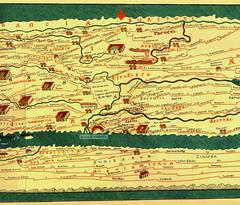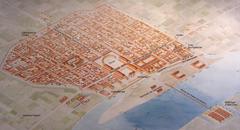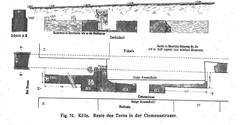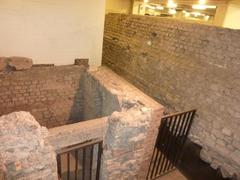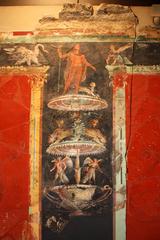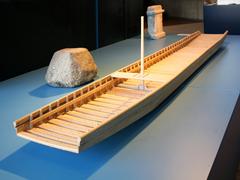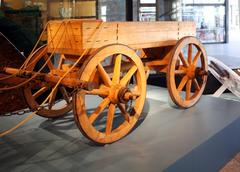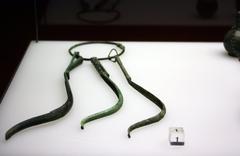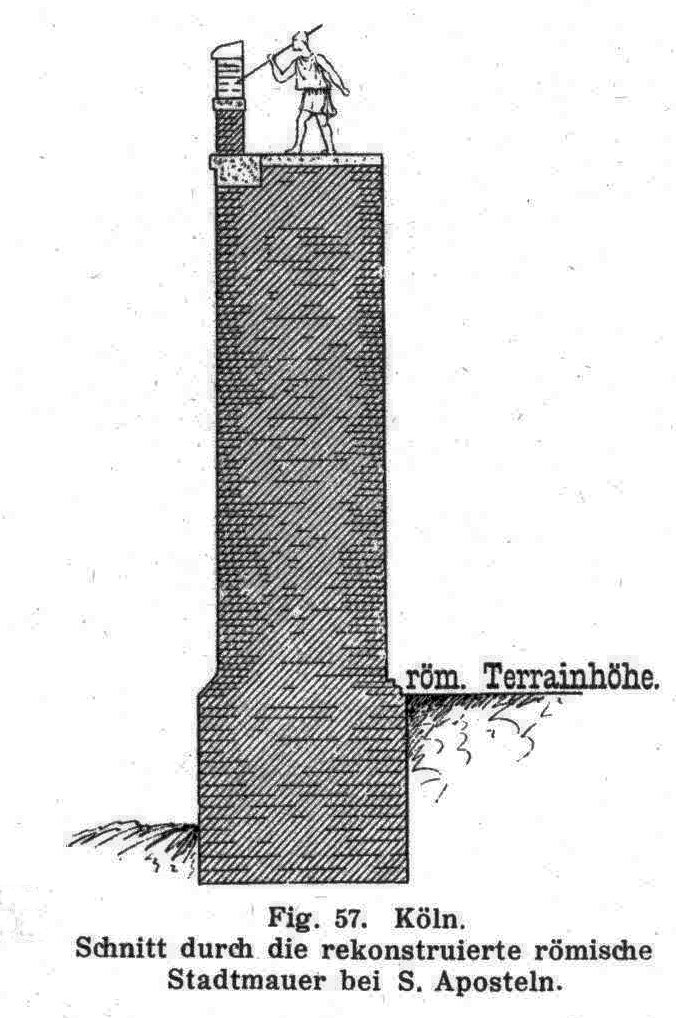
Visiting Colonia Claudia Ara Agrippinensium: Your Guide to Ancient Cologne, Germany
Date: 14/06/2025
Introduction: The Legacy of Roman Cologne
Colonia Claudia Ara Agrippinensium (CCAA), the Roman predecessor of modern Cologne, stands as a testament to the city’s enduring historical and cultural significance. Founded in the 1st century BCE and elevated to colonia status in 50 CE under Julia Agrippina, CCAA became the vibrant capital of Germania Inferior. For visitors interested in Roman history, urban archaeology, or cultural heritage, Cologne offers a rare opportunity to explore well-preserved ruins, world-class museums, and the living layers of a city shaped by two millennia of human activity (Cologne Tourism Official Website; Roman-Germanic Museum; The Crazy Tourist).
Table of Contents
- Introduction
- The Rise of Colonia Claudia Ara Agrippinensium: History and Significance
- Urban Development and Roman Infrastructure
- Economic, Political, and Cultural Highlights
- Archaeological Legacy: What Remains Today
- Visiting Information: Hours, Tickets, and Tours
- Accessibility and Travel Tips
- Nearby Attractions and Experiences
- FAQs
- Summary and Recommendations
- References
The Rise of Colonia Claudia Ara Agrippinensium: History and Significance
Early Roman Foundations
The origins of Cologne stretch back to the resettlement of the Ubii tribe by the Romans in the late 1st century BCE. The earliest settlement, Oppidum Ubiorum, soon became a key military and administrative post along the Rhine.
Becoming a Roman Colony
In 50 CE, the settlement was elevated to colonia status by Julia Agrippina, mother of Emperor Nero, and renamed Colonia Claudia Ara Agrippinensium. This new status brought full Roman citizenship rights, a model urban layout, and increased political importance as the capital of Germania Inferior (Wikipedia).
Urban Development and Roman Infrastructure
CCAA was meticulously planned, featuring a Capitolium temple, a spacious forum, extensive baths, and a sophisticated street grid. The city was encircled by 3,900 meters of stone walls, portions of which can still be visited today. Major Roman roads, such as Via Belgica, connected Cologne to the broader empire, while the Eifel Aqueduct supplied fresh water from over 95 kilometers away (TouristPlatform; HistoryHit).
Economic, Political, and Cultural Highlights
By the 2nd and 3rd centuries CE, CCAA was a flourishing metropolis with a population estimated between 20,000 and 45,000. It was renowned for its ceramics, glass production, and role as a commercial hub. The presence of the Rhine fleet at Alteburg and the nearby Divitia fort underlined the city’s strategic military importance.
Culturally, Cologne was a melting pot. Temples, a theater, and public baths fostered civic life, while the city boasted one of the earliest Jewish communities north of the Alps, as evidenced by Emperor Constantine’s 321 CE edict allowing Jews to serve on the city council (Wikipedia).
Archaeological Legacy: What Remains Today
Key Sites and Museums
- Roman-Germanic Museum (Römisch-Germanisches Museum): Home to the Dionysus Mosaic, Roman glassware, and the funerary monument of Poblicius.
- Roman City Wall and Römerturm: Surviving sections of the ancient fortifications, including the well-preserved Roman tower.
- Praetorium and Archaeological Zone: Remains of the governor’s palace and Roman sewer system under Cologne City Hall.
- Divitia-Deutz Fort: Remnants of Constantine’s Rhine fortifications.
- Romanesque Churches: Many, such as St. Maria im Kapitol and Groß St. Martin, are built atop Roman foundations.
Recent discoveries, like the 2023 Roman bathing complex at Neumarkt, continue to enrich the city’s Roman narrative (Roman-Germanic Museum; Cologne Tourism Official Website).
Visiting Information: Hours, Tickets, and Tours
Museum and Site Hours
- Roman-Germanic Museum: Tuesday–Sunday, 10:00 AM–6:00 PM; closed Mondays. Temporary exhibits available during renovations.
- Praetorium and Archaeological Zone: Tuesday–Sunday, 10:00 AM–5:00 PM.
- Romanesque Churches: Typically open daily 9:00 AM–6:00 PM (check individual church schedules).
- Other Sites: Outdoor ruins and towers are generally accessible year-round during daylight hours.
Tickets and Passes
- Museum Admission: €6–€12 for adults; discounts for students, children, and groups.
- Guided Tours: Available in various languages; typically €12–€20 per person.
- KölnCard: Offers public transport access and discounts on museums/tours. 24-hour card: €9 (single), €19 (group up to five).
Tickets for major attractions can be purchased online for convenience (GetYourGuide).
Accessibility and Travel Tips
- Accessibility: Major museums and many churches are wheelchair accessible. Some outdoor ruins have uneven terrain.
- Language: English is widely spoken at museums and on guided tours.
- Getting Around: The city center is walkable and bike-friendly. Public transport is efficient; consider the KölnCard for savings (SoloSophie).
- Best Time to Visit: Spring and autumn offer mild weather and fewer crowds. Christmas markets and Roman festivals add seasonal flair.
Nearby Attractions and Experiences
- Cologne Cathedral: A UNESCO World Heritage Site and masterpiece of Gothic architecture. Free entry; tower climb €6 (PlanetWare).
- Old Town (Altstadt): Historic squares like Alter Markt and colorful houses, ideal for dining and people-watching (Audiala).
- Hohenzollern Bridge: Famous for its love locks and panoramic city views.
- Rhine River Cruises: Scenic tours from €15 per person.
- Museums: Wallraf-Richartz Museum, Museum Ludwig, and the Chocolate Museum offer diverse cultural experiences (MyGermanyVacation).
- Botanical Garden: Free entry; open daily from 7:00 AM to sunset.
FAQs
Q: What are the visiting hours for Cologne’s Roman sites?
A: Most major sites are open from 10:00 AM to 6:00 PM; museums are closed on Mondays. Always check official websites for current hours.
Q: Where can I buy tickets?
A: Tickets are available online, at museum entrances, and via the KölnCard.
Q: Are the sites accessible for visitors with disabilities?
A: Major museums and churches are accessible; some ruins have uneven surfaces.
Q: Are guided tours available in English?
A: Yes, guided tours are offered in English and several other languages.
Q: What is the best time to visit?
A: Spring and autumn are ideal; winter offers festive markets and fewer crowds.
Summary and Recommendations
Colonia Claudia Ara Agrippinensium is a must-visit for anyone captivated by Roman history, urban archaeology, or the evolution of European cities. Visitors can explore authentic ruins, remarkable mosaics, and diverse museums, all within easy reach of Cologne’s bustling modern center. With accessible facilities, multilingual tours, and a calendar rich in Roman-themed events, Cologne invites you to experience its unique blend of ancient and contemporary culture.
Plan ahead by consulting official resources, booking tickets online, and considering the KölnCard or guided tours for the best value and convenience. For digital audio guides and personalized itineraries, download the Audiala app.
References
- Cologne Tourism Official Website
- Roman-Germanic Museum
- The Crazy Tourist
- http://ancientworld.hansotten.com/germany/colonia-claudia-ara-agrippinensium/
- https://www.historyhit.com/locations/weiden-roman-burial-chamber/
- https://en.wikipedia.org/wiki/History_of_Cologne
- https://www.touristplatform.com/article/legacy-from-the-roman-era-ancient-ruins-in-cologne
- https://www.planetware.com/tourist-attractions-/cologne-d-nw-col.htm
- https://www.mygermanyvacation.com/top-things-to-do-see-and-experience-in-cologne-germany/
- https://audiala.com/en/germany/cologne/alter-markt
- https://www.touropia.com/tourist-attractions-in-cologne/
- https://www.getyourguide.com/cologne-l19/cologne-following-the-city-s-roman-footpath-t217716/
- https://www.solosophie.com/hidden-gems-secret-spots-in-cologne/

